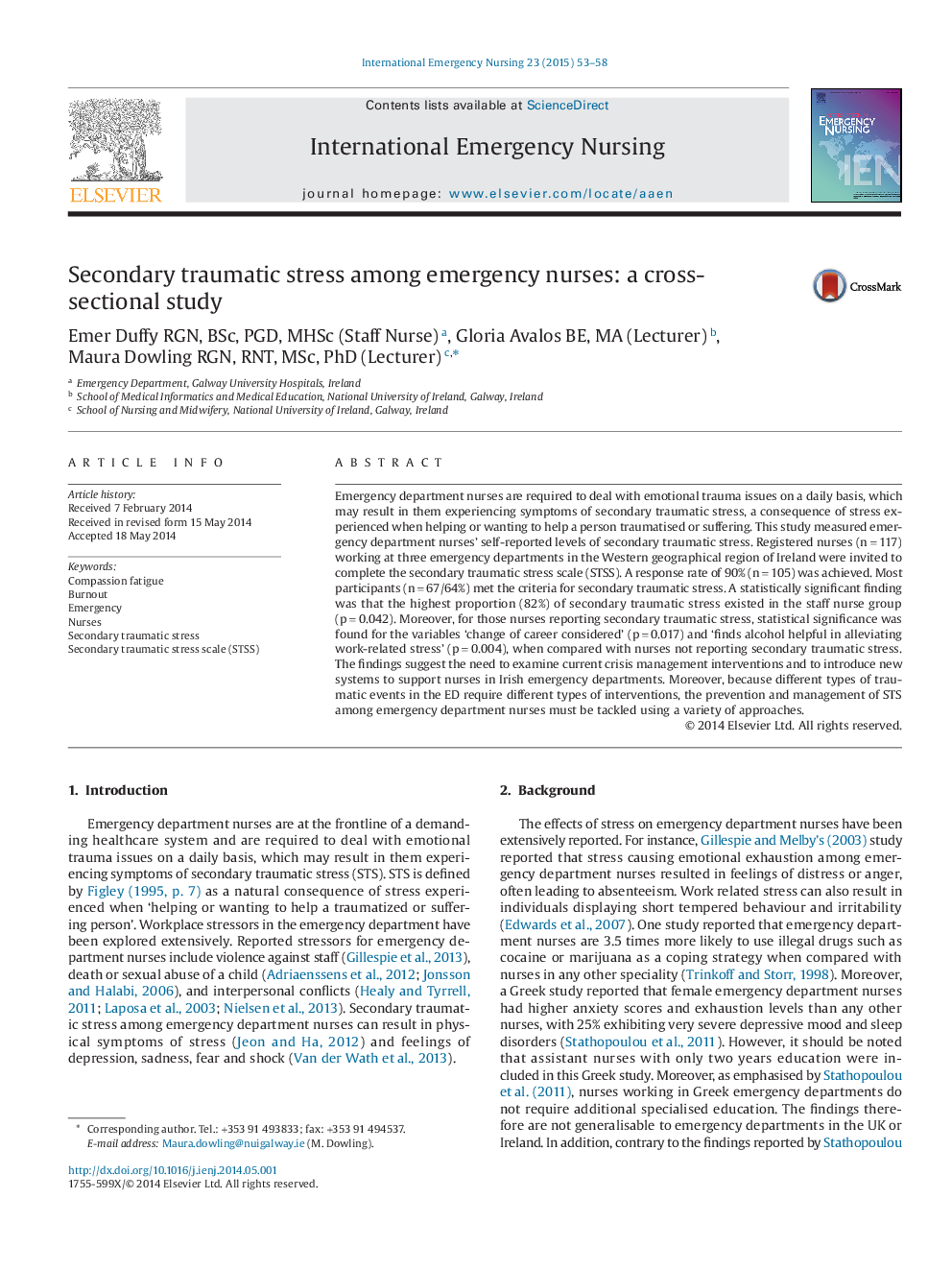| Article ID | Journal | Published Year | Pages | File Type |
|---|---|---|---|---|
| 2609342 | International Emergency Nursing | 2015 | 6 Pages |
Emergency department nurses are required to deal with emotional trauma issues on a daily basis, which may result in them experiencing symptoms of secondary traumatic stress, a consequence of stress experienced when helping or wanting to help a person traumatised or suffering. This study measured emergency department nurses’ self-reported levels of secondary traumatic stress. Registered nurses (n = 117) working at three emergency departments in the Western geographical region of Ireland were invited to complete the secondary traumatic stress scale (STSS). A response rate of 90% (n = 105) was achieved. Most participants (n = 67/64%) met the criteria for secondary traumatic stress. A statistically significant finding was that the highest proportion (82%) of secondary traumatic stress existed in the staff nurse group (p = 0.042). Moreover, for those nurses reporting secondary traumatic stress, statistical significance was found for the variables ‘change of career considered’ (p = 0.017) and ‘finds alcohol helpful in alleviating work-related stress’ (p = 0.004), when compared with nurses not reporting secondary traumatic stress. The findings suggest the need to examine current crisis management interventions and to introduce new systems to support nurses in Irish emergency departments. Moreover, because different types of traumatic events in the ED require different types of interventions, the prevention and management of STS among emergency department nurses must be tackled using a variety of approaches.
